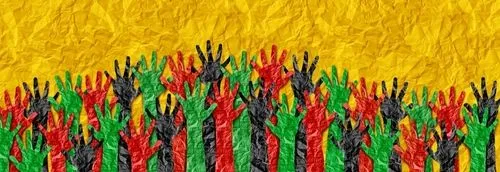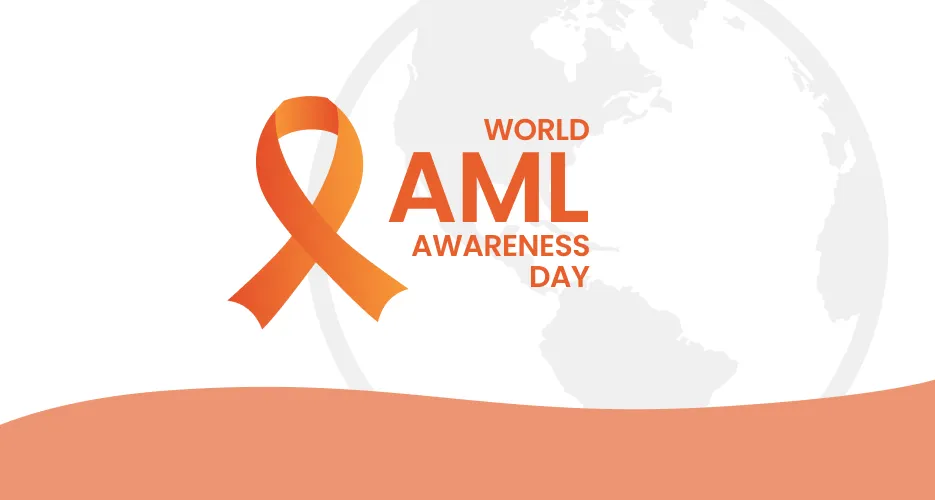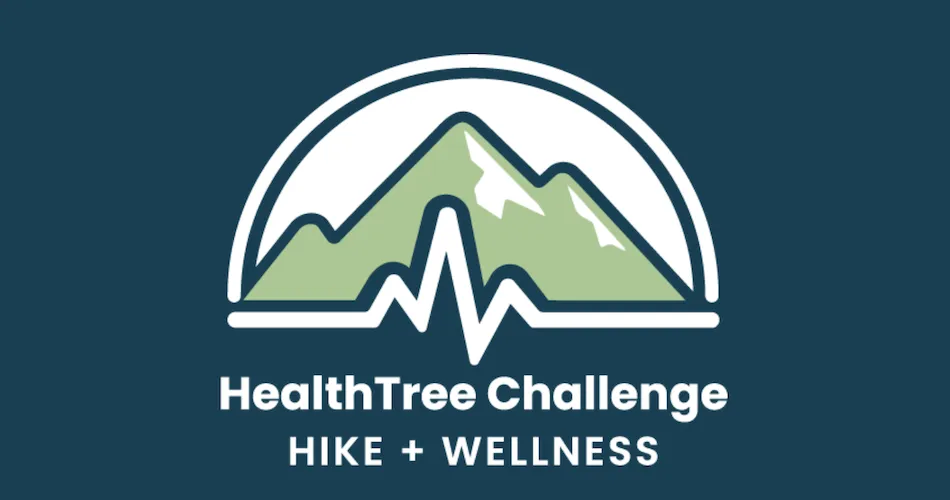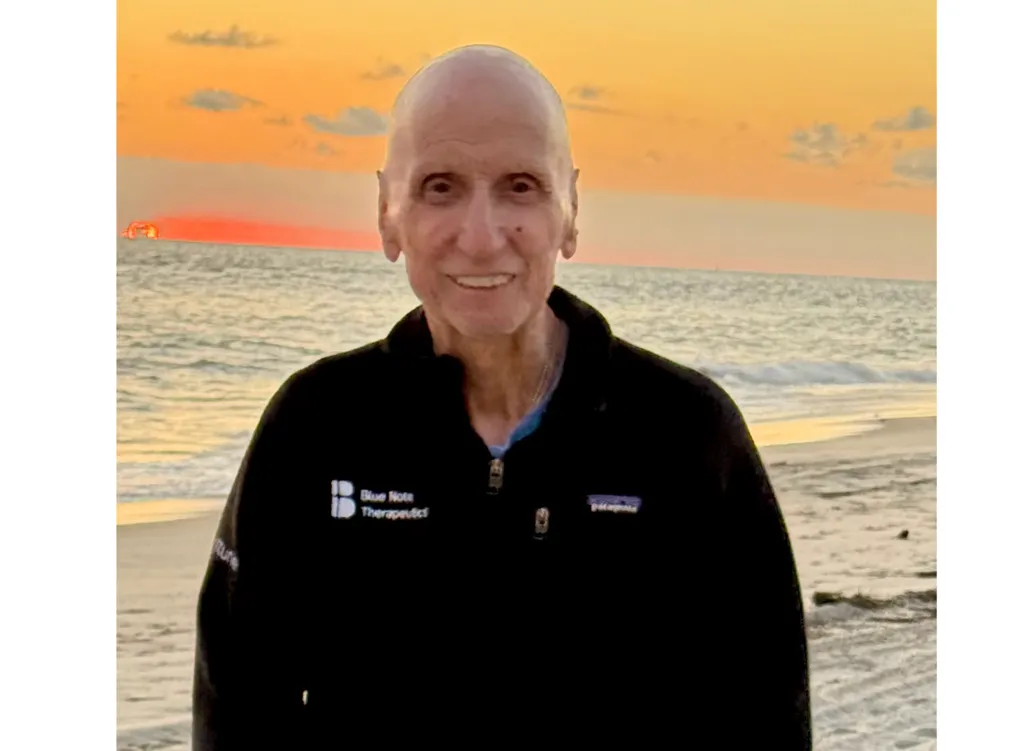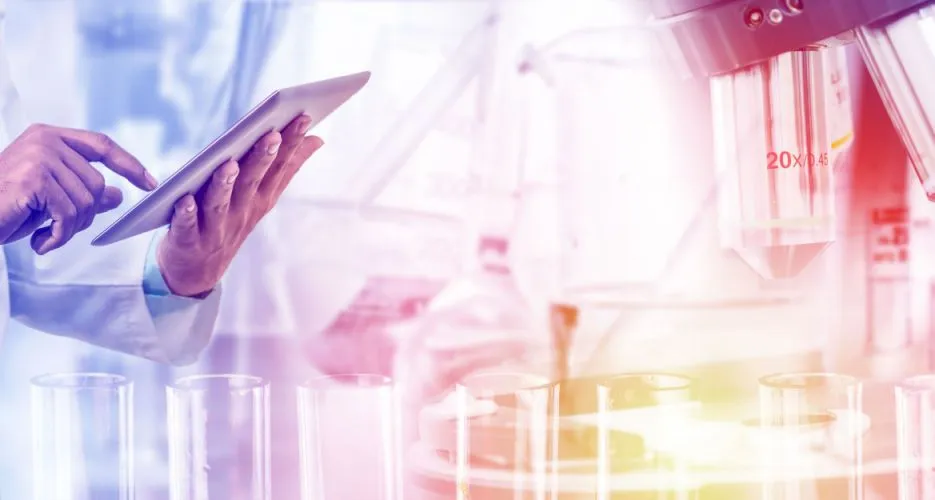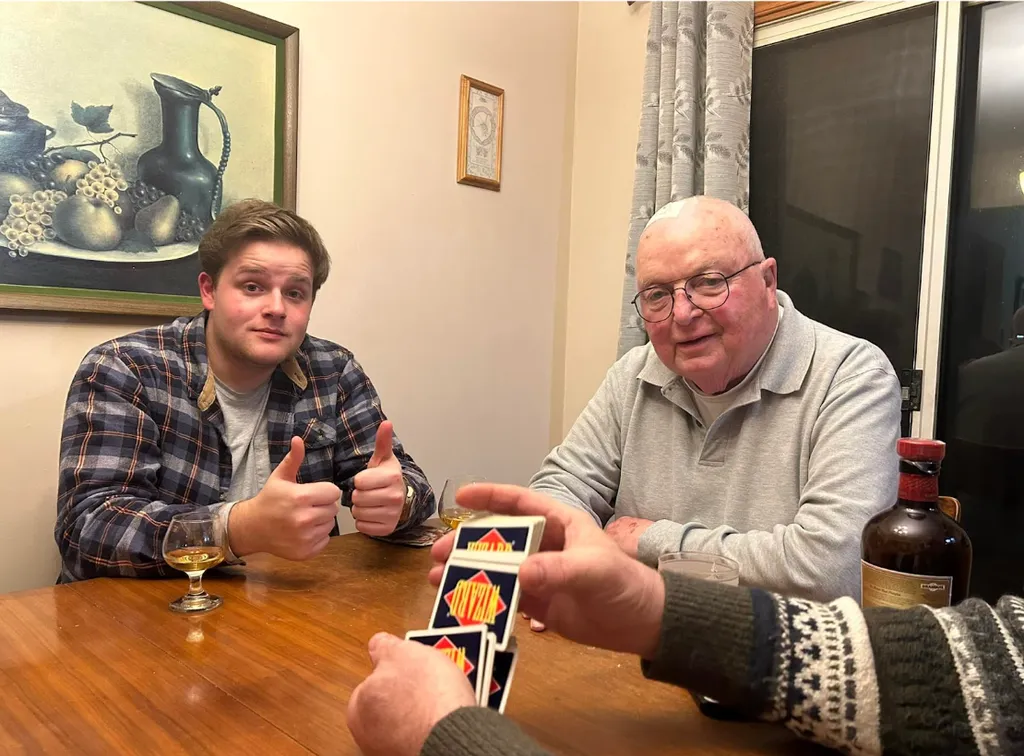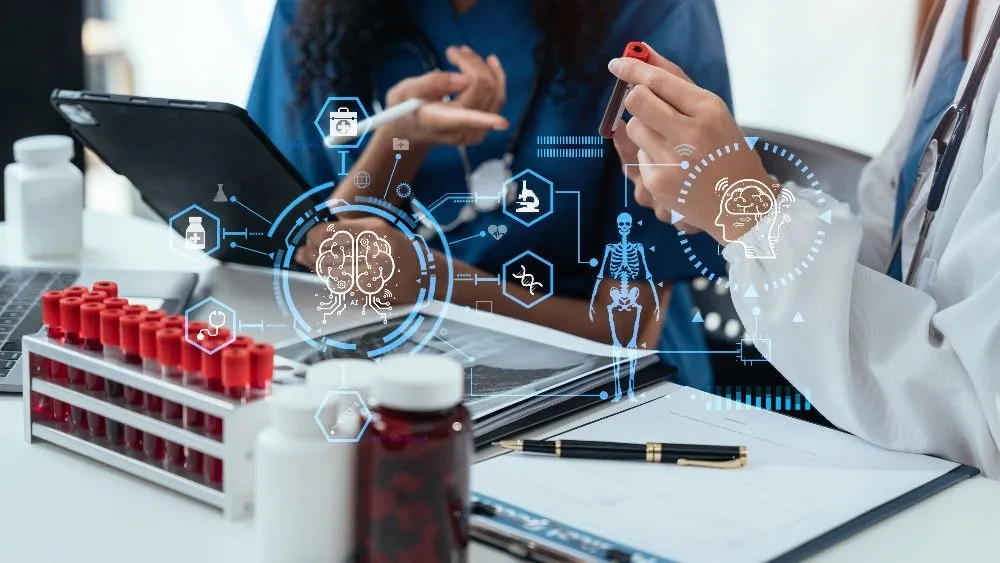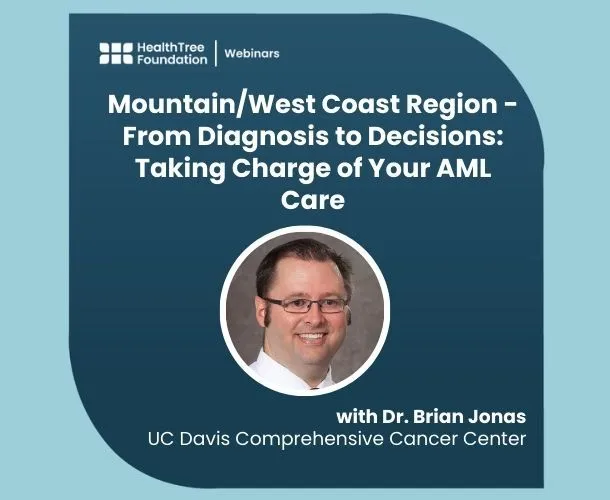Broadening the Dialogue with Your Oncology Team About AML
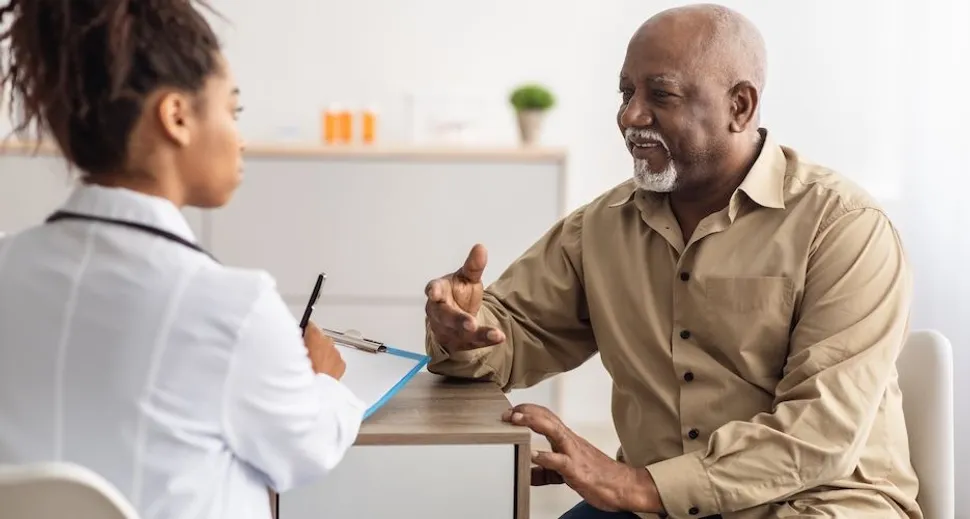
Patients with AML often express feelings of being pressured to begin treatment soon after their diagnosis. Additionally, many patients report that their doctors offered only a limited selection of treatment options.
The below event was presented by AML specialist Dr. Melissa Loh from the James P. Wilmont Cancer Institute in Rochester, New York and Steve Buechler, an AML survivor and professor emeritus from Minnesota State University. Steve, on the eve of his retirement, was diagnosed with AML. He documented his cancer journey, resulting in a memoir titled "How Steve Became Ralph: A Cancer Stem Cell Odyssey with Jokes". Now, he is an active peer volunteer and patient advocate.
Dr. Loh and Steve cover important insights into advocating for oneself as an AML patient and discuss findings from studies which are showing AML patients may often have more time from diagnosis to treatment to discuss treatment options than originally believed. This can allow AML patients time to have candid discussions with their healthcare team about treatment options, such as reviewing newer more personalized AML therapies geared towards the AML patient’s unique cancer cell genetic features. Click here for more about AML therapy options.
Watch the event’s recording below or read the summary.
Acute myeloid leukemia (AML) is a rapidly progressing cancer that originates in the bone marrow and quickly spreads to the bloodstream. As with any critical medical condition, its treatment has evolved over time, expanding to accommodate new research findings and patient feedback.
AML Treatment History
- 7+3 is an intensive therapy for AML patients which has been used as the standard of AML treatment from 1969 to 2005. It involves a prolonged hospital stay with difficult side effects. The drugs administered include cytarabine and daunorubicin. Patients may hear about a variation of 7+3 called Vyxeos.
- Stem cell transplant: Following chemotherapy, many patients undergo a stem cell transplant to restore their bone marrow.
- New medicines: Over the last decade, many new AML medicines have been created such as targeted therapies. These therapies match an AML patient’s specific genetic features of their AML cells. Click here for more about these medicines.
- Clinic-based treatment: Many of the newer AML treatments are typically administered in outpatient settings, allowing patients to return home following treatment.
- Modes of administration: Some treatments are administered intravenously or orally. An example of an AML oral treatment is venetoclax. Click here for more about venetoclax for AML.
Alternative Care for AML
For patients who cannot, or choose not to undergo standard AML treatments, alternative care measures might include:
- Administering antibiotics
- Regular lab monitoring
- Providing essential blood products
If the above measures don't provide satisfactory results, hospice care can be discussed as an alternative. Click here for more about hospice for AML patients.
Timing of AML Treatment
Historically, quick decisions characterized AML treatment post-diagnosis. Dr. Loh stated they are finding that in some cases, delaying starting treatment may be beneficial. The data she showcased reviewed the survival rate of AML patients treated 0-5 days after diagnosis and patients treated 15 days or more after diagnosis. Both patient groups showed similar survival outcomes regardless of the start time of treatment. AML patients may benefit from taking more time to make an informed treatment decision based on their personal case of AML, rather than rushing to immediately start intensive therapy.
However, immediate treatment is crucial in cases involving:
- Extremely elevated white blood cell count
- Certain alarming blood work results
- Acute initial symptoms
Steve's Experience
Steve’s AML treatment journey began in 2016. He felt numb and overwhelmed upon diagnosis. His treatment started almost immediately after diagnosis without much discussion. He was hospitalized during 7+3 chemotherapy for 37 days with difficult side effects. Steve stated that the approach was very rushed, which was the norm in 2016. However, after his initial treatment, Steve became more involved in his treatment decisions. Steve shares the following things that helped him in his AML journey:
- Risk category and treatment
- Steve was at first uncertain of the next best line of treatment for his AML because of his AML was in the intermediate risk category. He extensively explored his treatment options, including getting multiple second opinions.
- Decision-making and transplant
- After comprehensive discussions, Steve opted for a stem cell transplant. There were additional decisions regarding the type of donor, leading to the consideration of cord blood as a donor source.
- Clinical trial
- Steve was offered to participate in a clinical trial designed to compare decide a half-match sibling or cord blood. He participated in the clinical trial with the hopes of contributing to future medical knowledge.
- Importance of coping strategies
- Coping mechanisms like mindfulness, meditation, yoga, staying physically active, retaining a sense of humor, and writing about one's experience helped Steve maintain his mental and emotional health. While staying positive can be helpful, it was also crucial to process a range of emotions. Steve stated there's a difference between having a positive outlook and implementing coping strategies. Research indicates a link between positive coping strategies and reduced anxiety and depression in cancer patients, specifically in AML.
- Importance of being proactive
- Steve emphasizes the importance of patients being proactive, communicating any issues or side effects, and making use of available resources. The manner in which questions and forms are presented to patients matters as understanding the rationale can make patients more receptive.
- Spiritual care
- Despite not being very religious, Steve benefited from spiritual care discussions.
- Nutrition counseling
- Steve stated that nutrition guidance was somewhat helpful, although hospital food didn't always meet the recommended guidelines.
- Exercise and mindset
- Steve emphasized the importance of consistent, modest, exercise for both the body and the mind. The "Sisyphus model" Steve mentions promotes the idea that any amount of effort in physical activity is beneficial, regardless of intensity or frequency. It's crucial to rebuild and maintain physical strength and muscle mass lost during treatment. Physical therapy played a significant role during Steve's treatment, turning his hospital room into an exercise space.
- Engaging in service
- While it can be challenging to engage in additional services during treatment due to side effects and fatigue, Steve suggests exploring what's available, especially after hospitalization.
- Connecting with other patients
- Steve emphasized the value of peer support and patient advocacy, stating that connecting with someone who has been through similar experiences can be therapeutic for newly diagnosed patients.
Beneficial Measures for AML Patients from Dr. Loh
- Comprehensive health assessment
- Patients should inform their oncologist about the comprehensive aspect of their health as each area affects treatment decisions. This includes daily activities, medical problems, mobility status, cognitive functions, support systems, medications, emotional state, and nutritional status.
- Emotional and cognitive health impact
- Emotional well-being, especially signs of depression, has a direct impact on treatment outcomes. Moreover, challenges with memory or cognitive function can also affect results.
- Preventing the risk of falling
- Having AML patients do physical therapy early on can help patients build back needed strength after treatment to help them take care of themselves and reduce the frequency of falls.
- Post-treatment resources
- Seeking resources outside of the hospital, like exercise classes tailored for cancer patients, can be beneficial. Patients should leverage social workers or other hospital resources to find these support services.
- Overcoming resource disparity for long-distance patients
- Patients often experience a disparity in resource availability before and after being discharged from the hospital, especially if they live far from the medical facility. As a solution, Dr. Loh’s research aims to design home-based programs and digital tools, such as mobile apps, that can help patients continue their treatment and regain strength after hospital discharge. These tools not only guide patients through exercises but also monitor potential side effects and convey this information back to the patient's cancer care team. These programs are currently being tested at UC Rochester, and the feedback from patients is positive.
- The invitation to get involved in research
- Dr. Loh highlighted the importance of patient involvement in research, both as subjects and as contributors to the research design and feedback process. Steve agreed that he benefited from participating in research through a clinical trial.
Conclusion
The traditional approach to AML treatment has been to initiate therapy promptly after diagnosis; however, Dr. Loh presented data suggesting that a delayed start to treatment may be advantageous for some patients, with survival outcomes similar to those who begin treatment immediately. This supports a more considered decision-making process for AML treatments tailored to individual cases. Steve's personal account of his AML treatment underscores this point. Initially receiving immediate treatment in 2016 with little discussion, he later took a proactive role, exploring options and choosing a stem cell transplant, even participating in a clinical trial.
Steve also emphasized the importance of coping strategies, proactive communication, spiritual care, nutrition, consistent exercise, peer support, and patient advocacy. Dr. Loh added that a comprehensive health assessment, including emotional and cognitive health, plays a crucial role in treatment outcomes. She also noted the potential benefits of physical therapy, post-treatment resources, addressing resource disparity through home-based programs and digital tools, and the importance of involving patients in research.
Participant Question
- When is it appropriate to get a second opinion?
- If one feels the need for a second opinion, they should pursue it. However, there may be time constraints, especially in the early stages of diagnosis. Patients should communicate with their oncologist regarding this, as oncologists are generally open to patients seeking second opinions.
Patients with AML often express feelings of being pressured to begin treatment soon after their diagnosis. Additionally, many patients report that their doctors offered only a limited selection of treatment options.
The below event was presented by AML specialist Dr. Melissa Loh from the James P. Wilmont Cancer Institute in Rochester, New York and Steve Buechler, an AML survivor and professor emeritus from Minnesota State University. Steve, on the eve of his retirement, was diagnosed with AML. He documented his cancer journey, resulting in a memoir titled "How Steve Became Ralph: A Cancer Stem Cell Odyssey with Jokes". Now, he is an active peer volunteer and patient advocate.
Dr. Loh and Steve cover important insights into advocating for oneself as an AML patient and discuss findings from studies which are showing AML patients may often have more time from diagnosis to treatment to discuss treatment options than originally believed. This can allow AML patients time to have candid discussions with their healthcare team about treatment options, such as reviewing newer more personalized AML therapies geared towards the AML patient’s unique cancer cell genetic features. Click here for more about AML therapy options.
Watch the event’s recording below or read the summary.
Acute myeloid leukemia (AML) is a rapidly progressing cancer that originates in the bone marrow and quickly spreads to the bloodstream. As with any critical medical condition, its treatment has evolved over time, expanding to accommodate new research findings and patient feedback.
AML Treatment History
- 7+3 is an intensive therapy for AML patients which has been used as the standard of AML treatment from 1969 to 2005. It involves a prolonged hospital stay with difficult side effects. The drugs administered include cytarabine and daunorubicin. Patients may hear about a variation of 7+3 called Vyxeos.
- Stem cell transplant: Following chemotherapy, many patients undergo a stem cell transplant to restore their bone marrow.
- New medicines: Over the last decade, many new AML medicines have been created such as targeted therapies. These therapies match an AML patient’s specific genetic features of their AML cells. Click here for more about these medicines.
- Clinic-based treatment: Many of the newer AML treatments are typically administered in outpatient settings, allowing patients to return home following treatment.
- Modes of administration: Some treatments are administered intravenously or orally. An example of an AML oral treatment is venetoclax. Click here for more about venetoclax for AML.
Alternative Care for AML
For patients who cannot, or choose not to undergo standard AML treatments, alternative care measures might include:
- Administering antibiotics
- Regular lab monitoring
- Providing essential blood products
If the above measures don't provide satisfactory results, hospice care can be discussed as an alternative. Click here for more about hospice for AML patients.
Timing of AML Treatment
Historically, quick decisions characterized AML treatment post-diagnosis. Dr. Loh stated they are finding that in some cases, delaying starting treatment may be beneficial. The data she showcased reviewed the survival rate of AML patients treated 0-5 days after diagnosis and patients treated 15 days or more after diagnosis. Both patient groups showed similar survival outcomes regardless of the start time of treatment. AML patients may benefit from taking more time to make an informed treatment decision based on their personal case of AML, rather than rushing to immediately start intensive therapy.
However, immediate treatment is crucial in cases involving:
- Extremely elevated white blood cell count
- Certain alarming blood work results
- Acute initial symptoms
Steve's Experience
Steve’s AML treatment journey began in 2016. He felt numb and overwhelmed upon diagnosis. His treatment started almost immediately after diagnosis without much discussion. He was hospitalized during 7+3 chemotherapy for 37 days with difficult side effects. Steve stated that the approach was very rushed, which was the norm in 2016. However, after his initial treatment, Steve became more involved in his treatment decisions. Steve shares the following things that helped him in his AML journey:
- Risk category and treatment
- Steve was at first uncertain of the next best line of treatment for his AML because of his AML was in the intermediate risk category. He extensively explored his treatment options, including getting multiple second opinions.
- Decision-making and transplant
- After comprehensive discussions, Steve opted for a stem cell transplant. There were additional decisions regarding the type of donor, leading to the consideration of cord blood as a donor source.
- Clinical trial
- Steve was offered to participate in a clinical trial designed to compare decide a half-match sibling or cord blood. He participated in the clinical trial with the hopes of contributing to future medical knowledge.
- Importance of coping strategies
- Coping mechanisms like mindfulness, meditation, yoga, staying physically active, retaining a sense of humor, and writing about one's experience helped Steve maintain his mental and emotional health. While staying positive can be helpful, it was also crucial to process a range of emotions. Steve stated there's a difference between having a positive outlook and implementing coping strategies. Research indicates a link between positive coping strategies and reduced anxiety and depression in cancer patients, specifically in AML.
- Importance of being proactive
- Steve emphasizes the importance of patients being proactive, communicating any issues or side effects, and making use of available resources. The manner in which questions and forms are presented to patients matters as understanding the rationale can make patients more receptive.
- Spiritual care
- Despite not being very religious, Steve benefited from spiritual care discussions.
- Nutrition counseling
- Steve stated that nutrition guidance was somewhat helpful, although hospital food didn't always meet the recommended guidelines.
- Exercise and mindset
- Steve emphasized the importance of consistent, modest, exercise for both the body and the mind. The "Sisyphus model" Steve mentions promotes the idea that any amount of effort in physical activity is beneficial, regardless of intensity or frequency. It's crucial to rebuild and maintain physical strength and muscle mass lost during treatment. Physical therapy played a significant role during Steve's treatment, turning his hospital room into an exercise space.
- Engaging in service
- While it can be challenging to engage in additional services during treatment due to side effects and fatigue, Steve suggests exploring what's available, especially after hospitalization.
- Connecting with other patients
- Steve emphasized the value of peer support and patient advocacy, stating that connecting with someone who has been through similar experiences can be therapeutic for newly diagnosed patients.
Beneficial Measures for AML Patients from Dr. Loh
- Comprehensive health assessment
- Patients should inform their oncologist about the comprehensive aspect of their health as each area affects treatment decisions. This includes daily activities, medical problems, mobility status, cognitive functions, support systems, medications, emotional state, and nutritional status.
- Emotional and cognitive health impact
- Emotional well-being, especially signs of depression, has a direct impact on treatment outcomes. Moreover, challenges with memory or cognitive function can also affect results.
- Preventing the risk of falling
- Having AML patients do physical therapy early on can help patients build back needed strength after treatment to help them take care of themselves and reduce the frequency of falls.
- Post-treatment resources
- Seeking resources outside of the hospital, like exercise classes tailored for cancer patients, can be beneficial. Patients should leverage social workers or other hospital resources to find these support services.
- Overcoming resource disparity for long-distance patients
- Patients often experience a disparity in resource availability before and after being discharged from the hospital, especially if they live far from the medical facility. As a solution, Dr. Loh’s research aims to design home-based programs and digital tools, such as mobile apps, that can help patients continue their treatment and regain strength after hospital discharge. These tools not only guide patients through exercises but also monitor potential side effects and convey this information back to the patient's cancer care team. These programs are currently being tested at UC Rochester, and the feedback from patients is positive.
- The invitation to get involved in research
- Dr. Loh highlighted the importance of patient involvement in research, both as subjects and as contributors to the research design and feedback process. Steve agreed that he benefited from participating in research through a clinical trial.
Conclusion
The traditional approach to AML treatment has been to initiate therapy promptly after diagnosis; however, Dr. Loh presented data suggesting that a delayed start to treatment may be advantageous for some patients, with survival outcomes similar to those who begin treatment immediately. This supports a more considered decision-making process for AML treatments tailored to individual cases. Steve's personal account of his AML treatment underscores this point. Initially receiving immediate treatment in 2016 with little discussion, he later took a proactive role, exploring options and choosing a stem cell transplant, even participating in a clinical trial.
Steve also emphasized the importance of coping strategies, proactive communication, spiritual care, nutrition, consistent exercise, peer support, and patient advocacy. Dr. Loh added that a comprehensive health assessment, including emotional and cognitive health, plays a crucial role in treatment outcomes. She also noted the potential benefits of physical therapy, post-treatment resources, addressing resource disparity through home-based programs and digital tools, and the importance of involving patients in research.
Participant Question
- When is it appropriate to get a second opinion?
- If one feels the need for a second opinion, they should pursue it. However, there may be time constraints, especially in the early stages of diagnosis. Patients should communicate with their oncologist regarding this, as oncologists are generally open to patients seeking second opinions.

about the author
Megan Heaps
Megan joined HealthTree in 2022. She enjoys helping patients and their care partners understand the various aspects of the cancer. This understanding enables them to better advocate for themselves and improve their treatment outcomes.
More on HealthTree Programs

Get the Latest Acute Myeloid Leukemia Updates, Delivered to You.
By subscribing to the HealthTree newsletter, you'll receive the latest research, treatment updates, and expert insights to help you navigate your health.



